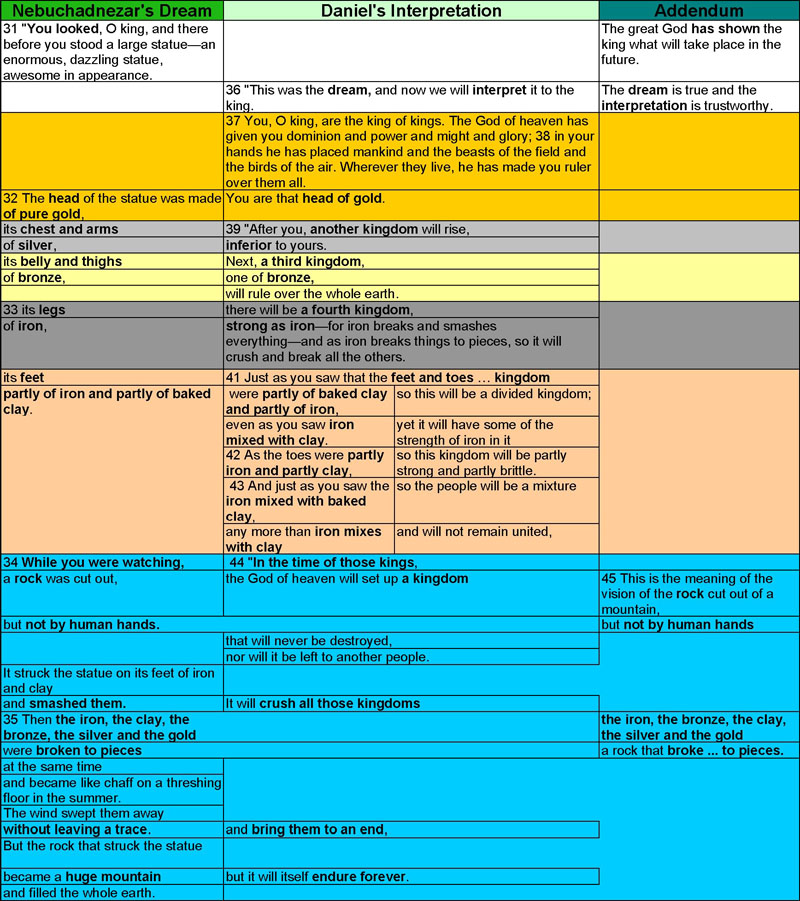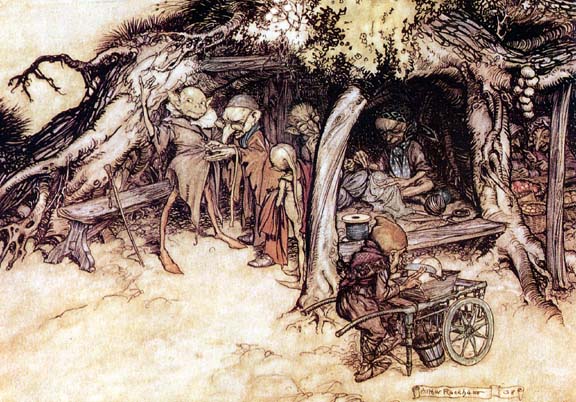|
All That Glitters Is Not Gold
"All that glitters is not gold" is an aphorism stating that not everything that looks precious or true turns out to be so. While early expressions of the idea are known from at least the 12th–13th century, the current saying is derived from a 16th-century line by William Shakespeare, "All that glisters is not gold". Origins The expression, in various forms, originated in or before the 12th century and may date back to Æsop. The Latin is ''Non omne quod nitet aurum est.'' The French monk Alain de Lille wrote "Do not hold everything gold that shines like gold" in 1175. Chaucer gave two early versions in English: "''But al thyng which that shyneth as the gold / Nis nat gold, as that I have herd it told''" in "The Canon's Yeoman's Tale", and "''Hyt is not al golde that glareth''" in "The House of Fame". The popular form of the expression is a derivative of a line in William Shakespeare's play ''The Merchant of Venice'', which employs the word "glisters," a 16th-century synonym ... [...More Info...] [...Related Items...] OR: [Wikipedia] [Google] [Baidu] |
Aphorism
An aphorism (from Greek ἀφορισμός: ''aphorismos'', denoting 'delimitation', 'distinction', and 'definition') is a concise, terse, laconic, or memorable expression of a general truth or principle. Aphorisms are often handed down by tradition from generation to generation. The concept is generally distinct from those of an adage, brocard, chiasmus, epigram, maxim (legal or philosophical), principle, proverb, and saying; although some of these concepts may be construed as types of aphorism. Often, aphorisms are distinguished from other short sayings by the need for interpretation to make sense of them. In ''A Theory of the Aphorism'', Andrew Hui defined an aphorism as "a short saying that requires interpretation." History The word was first used in the '' Aphorisms'' of Hippocrates, a long series of propositions concerning the symptoms and diagnosis of disease and the art of healing and medicine. The often cited first sentence of this work is: "" - "life is shor ... [...More Info...] [...Related Items...] OR: [Wikipedia] [Google] [Baidu] |
Paraphrase
A paraphrase () is a restatement of the meaning of a text or passage using other words. The term itself is derived via Latin ', . The act of paraphrasing is also called ''paraphrasis''. History Although paraphrases likely abounded in oral traditions, paraphrasing as a specific educational exercise dates back to at least Roman times, when the author Quintilian recommended it for students to develop dexterity in language. In the Middle Ages, this tradition continued, with authors such as Geoffrey of Vinsauf developing schoolroom exercises that included both rhetorical manipulations and paraphrasing as a way of generating poems and speeches. Paraphrasing seems to have dropped off as a specific exercise that students learn, a drop off that largely coincides with the removal of Classical texts from the core of Western education. There is, however, renewed interest in the study of paraphrases, given concerns around plagiarism and original authorship. Analysis A paraphrase typicall ... [...More Info...] [...Related Items...] OR: [Wikipedia] [Google] [Baidu] |
Neil Young
Neil Percival Young (born November 12, 1945) is a Canadian-American singer and songwriter. After embarking on a music career in Winnipeg in the 1960s, Young moved to Los Angeles, joining Buffalo Springfield with Stephen Stills, Richie Furay and others. Since the beginning of his solo career with his backing band Crazy Horse (band), Crazy Horse, he has released many critically acclaimed and important albums, such as ''Everybody Knows This Is Nowhere'', ''After the Gold Rush'', ''Harvest (Neil Young album), Harvest'', ''On the Beach (Neil Young album), On the Beach'' and ''Rust Never Sleeps''. He was a part-time member of Crosby, Stills, Nash & Young. His guitar work, deeply personal lyrics and signature high tenor singing voice define his long career. Young also plays piano and harmonica on many albums, which frequently combine folk music, folk, rock music, rock, country music, country and other musical genres. His often distorted electric guitar playing, especially with Cra ... [...More Info...] [...Related Items...] OR: [Wikipedia] [Google] [Baidu] |
Stairway To Heaven
"Stairway to Heaven" is a song by English rock band Led Zeppelin, released in late 1971. It was composed by the band's guitarist Jimmy Page and lead singer Robert Plant for their untitled fourth studio album (often titled ''Led Zeppelin IV''). The song is widely regarded as one of the greatest rock songs of all time.September 2002 Issue '' SPIN''. SPIN Media. The song has three sections, each one progressively increasing in and . The s ... [...More Info...] [...Related Items...] OR: [Wikipedia] [Google] [Baidu] |
Led Zeppelin
Led Zeppelin were an English rock band formed in London in 1968. The group comprised vocalist Robert Plant, guitarist Jimmy Page, bassist/keyboardist John Paul Jones, and drummer John Bonham. With a heavy, guitar-driven sound, they are cited as one of the progenitors of hard rock and heavy metal, although their style drew from a variety of influences, including blues and folk music. Led Zeppelin have been credited as significantly impacting the nature of the music industry, particularly in the development of album-oriented rock (AOR) and stadium rock. Originally named the New Yardbirds, Led Zeppelin signed a deal with Atlantic Records that gave them considerable artistic freedom. Initially unpopular with critics, they achieved significant commercial success with eight studio albums over ten years. Their 1969 debut, '' Led Zeppelin'', was a top-ten album in several countries and featured such tracks as "Good Times Bad Times", " Dazed and Confused" and "Communication ... [...More Info...] [...Related Items...] OR: [Wikipedia] [Google] [Baidu] |
Aragorn
Aragorn is a fictional character and a protagonist in J. R. R. Tolkien's ''The Lord of the Rings''. Aragorn was a Ranger of the North, first introduced with the name Strider and later revealed to be the heir of Isildur, an ancient King of Arnor (Middle-earth), Arnor and Gondor. Aragorn was a confidant of the wizard Gandalf, and played a part in the quest to destroy the One Ring and defeat the Dark Lord Sauron. As a young man, Aragorn fell in love with the immortal Elf (Middle-earth), elf Arwen, as told in The Tale of Aragorn and Arwen. Arwen's father, Elrond, Elrond Half-elven, forbade them to marry unless Aragorn became King of both Arnor and Gondor. Aragorn led the Fellowship of the Ring (characters), Fellowship of the Ring following the loss of Gandalf in the Mines of Moria (Middle-earth), Moria. When the Fellowship was broken, he tracked the hobbits Meriadoc Brandybuck and Peregrin Took with the help of Legolas the elf and Gimli (Middle-earth), Gimli the dwarf to Fangorn F ... [...More Info...] [...Related Items...] OR: [Wikipedia] [Google] [Baidu] |
McFarland & Company
McFarland & Company, Inc., is an American independent book publisher based in Jefferson, North Carolina, that specializes in academic and reference works, as well as general-interest adult nonfiction. Its president is Rhonda Herman. Its former president and current editor-in-chief is Robert Franklin, who founded the company in 1979. McFarland employs a staff of about 50, and had published 7,800 titles. McFarland's initial print runs average 600 copies per book. Subject matter McFarland & Company focuses mainly on selling to libraries. It also utilizes direct mailing to connect with enthusiasts in niche categories. The company is known for its sports literature, especially baseball history, as well as books about chess, military history, and film. In 2007, the ''Mountain Times'' wrote that McFarland publishes about 275 scholarly monographs and reference book titles a year; Robert Lee Brewer reported in 2015 that the number is about 350. List of scholarly journals The following ... [...More Info...] [...Related Items...] OR: [Wikipedia] [Google] [Baidu] |
The Fellowship Of The Ring
''The Fellowship of the Ring'' is the first of three volumes of the epic novel ''The Lord of the Rings'' by the English author J. R. R. Tolkien. It is followed by ''The Two Towers'' and ''The Return of the King''. It takes place in the fictional universe of Middle-earth, and was originally published on 29 July 1954 in the United Kingdom. The volume consists of a foreword, in which the author discusses his writing of ''The Lord of the Rings'', a prologue titled "Concerning Hobbits, and other matters", and the main narrative in Book I and Book II. Title and publication Tolkien envisioned ''The Lord of the Rings'' as a single volume work divided into six sections he called "books" along with extensive appendices. The original publisher decided to split the work into three parts. Before the decision to publish ''The Lord of the Rings'' in three volumes was made, Tolkien had hoped to publish the novel in one volume, possibly also combined with ''The Silmarillion''. However, he ha ... [...More Info...] [...Related Items...] OR: [Wikipedia] [Google] [Baidu] |
Shakespeare's Influence On Tolkien
Shakespeare's influence on Tolkien was substantial, despite Tolkien's professed dislike of the playwright. Tolkien disapproved in particular of Shakespeare's devaluation of elves, and was deeply disappointed by Shakespeare's prosaic explanation of how Birnam Wood came to Dunsinane Hill in ''Macbeth''. Tolkien was influenced especially by ''Macbeth'' and ''A Midsummer Night's Dream'', and he used ''King Lear'' for "issues of kingship, madness, and succession". He arguably drew on several other plays, including ''The Merchant of Venice'', ''Henry IV, Part 1'', and '' Love's Labour's Lost'', as well as Shakespeare's poetry, for numerous effects in his Middle-earth writings. The Tolkien scholar Tom Shippey suggests that Tolkien may even have felt a kind of fellow-feeling with Shakespeare, as both men were rooted in the county of Warwickshire. Shakespeare as a source Tolkien's dislike of Shakespeare J. R. R. Tolkien, a philologist and medievalist as well as a fantasy author ... [...More Info...] [...Related Items...] OR: [Wikipedia] [Google] [Baidu] |
Bugs Bunny
Bugs Bunny is an animated cartoon character created in the late 1930s by Leon Schlesinger Productions (later Warner Bros. Cartoons) and voiced originally by Mel Blanc. Bugs is best known for his starring roles in the '' Looney Tunes'' and '' Merrie Melodies'' series of animated short films, produced by Warner Bros. Though an early iteration of the character first appeared in the WB cartoon ''Porky's Hare Hunt'' (1938) and a few subsequent shorts, the definitive characterization of Bugs Bunny is widely credited to have debuted in Tex Avery's Oscar-nominated film ''A Wild Hare'' (1940). Bob Givens is credited for Bugs' initial character design, though Robert McKimson is credited for what became Bugs' definitive design just a few years later. Bugs is an anthropomorphic gray and white rabbit or hare who is famous for his flippant, insouciant personality. He is also characterized by a Brooklyn accent, his portrayal as a trickster, and his catch phrase "Eh...What's up, doc?". Due ... [...More Info...] [...Related Items...] OR: [Wikipedia] [Google] [Baidu] |
Bowery Bugs
''Bowery Bugs'' is a 1949 Warner Bros. '' Merrie Melodies'' cartoon directed by Arthur Davis, and written by Lloyd Turner and Bill Scott. It was released on June 4, 1949, and features Bugs Bunny. The cartoon tells the story of Steve Brodie, who reportedly jumped off the Brooklyn Bridge in 1886 and survived. Plot Bugs Bunny is standing at the base of the famous Brooklyn Bridge, (about half a mile from the southern end of the actual street called the Bowery), telling an old man a story, in carnival-barker style, about how and why Steve Brody jumped off the bridge in July 1886 in the form of pictures: Brody had a terrific run of luck...all bad. He decided he needed a good luck charm...ideally, a rabbit's foot. But he could not find one in the city, so he tried looking in the country forest. At this point, the story is animated. Brody cycles to Flatbush and finds Bugs' house. Brody, holding a knife, pulls Bugs (singing " All that glitters is not gold") out of his home and tell ... [...More Info...] [...Related Items...] OR: [Wikipedia] [Google] [Baidu] |
New York Public Library Digital Collections
New is an adjective referring to something recently made, discovered, or created. New or NEW may refer to: Music * New, singer of K-pop group The Boyz Albums and EPs * ''New'' (album), by Paul McCartney, 2013 * ''New'' (EP), by Regurgitator, 1995 Songs * "New" (Daya song), 2017 * "New" (Paul McCartney song), 2013 * "New" (No Doubt song), 1999 *"new", by Loona from '' Yves'', 2017 *"The New", by Interpol from ''Turn On the Bright Lights'', 2002 Acronyms * Net economic welfare, a proposed macroeconomic indicator * Net explosive weight, also known as net explosive quantity * Network of enlightened Women, a conservative university women's organization * Next Entertainment World, a South Korean film distribution company Identification codes * Nepal Bhasa language ISO 639 language code * New Century Financial Corporation (NYSE stock abbreviation) * Northeast Wrestling, a professional wrestling promotion in the northeastern United States Transport * New Orleans Lakefront Air ... [...More Info...] [...Related Items...] OR: [Wikipedia] [Google] [Baidu] |





